Following guide and owner of Taos Fly Shop Nick Streit along the banks of the Rio Grande in northern New Mexico isn’t easy. There are so many potential ankle-twisting scenarios—rocks, holes, steep and slippery mud banks—and so many distractions. For a curious nose like mine, it was smells that were distracting. The spice of sage mixed with smooth vanilla of ponderosa pine, and then a medley of something else I couldn’t identify. The fragrant richness was unexpected in such austere country. Bone dry vertical walls surrounded us with most greenery clustered near the river as peregrine falcons patrolled the air and chipmunks eyed us suspiciously from basalt boulders. I might have been smelling the Apache plume or one of the various mints, Nick wasn’t sure, but whatever the components that were carried on arid breezes twisting through the gorge, they were intoxicating. Throw in a few trout, surprisingly abundant wildlife and absolutely no signs of civilization, and it adds up to something rare and precious.
Spectacular in it’s lonely vastness, the Rio Grande Del Norte National Monument spreads across approximately 242,555 acres of land in Taos County, New Mexico, at an average elevation of 7,000 feet. Standing 800 feet above the Rio Grande as we prepared for the 30-minute hike down, the feeling of insignificance was overpowering. I’m just a speck on the rim, peering down at the brown river as pack mules are loaded for one more trip in preparation for our float.
Most of the land is managed by the Bureau of Land Management and has been for years. But the desert backcountry gained another buffer of protection when President Obama designated it a national monument on March 25, 2013 under the provisions of the Antiquities Act. Most Americans understand the purpose of the Antiquities Act; to protect of artifacts and historical sites. But it’s a broad executive power providing protection for natural and cultural resources as well. Rio Grande Del Norte falls squarely under the natural and cultural resources. In reality, they are one in the same. Cultures are built on natural resources.

I’m anxious to reach the water, to tangle with the Rio Grande rainbows that Trout Unlimited New Mexico Public Lands Coordinator Toner Mitchell said we would “feel.” “If you get into a good rainbow on the river, you’re going to know it immediately,” he claimed over drinks on the night prior to our excursion. Chunky rainbows and Rio Grande cutthroats finned through my head as we started our descent, but a few stumbles brought me back to the task at hand—traversing a steep, narrow, loose-rock trail with felt-bottomed wading boots. Not the best option. Nick demonstrated their shortcomings right off the bat as he performed an expert no-hands-involved butt landing on thankfully flat rock while protecting fly rods and tackle just after telling us all to be careful. Taking note, we all adopt a careful stride as Nick tells us about his connection to this place. "This is obviously where I make a lot of my money doing guide trips down here,” says Nick. “But even more importantly, I grew up in northern New Mexico. I’ve killed elk out here that we eat for the year. I come out here to get fire wood to heat my house as a lot of locals do. I come out here to pick piñons. This is so much a part of our identity as a people.”

Crunching, popping gravel under soft footfalls fill the gaps in conversation as we continue downward. Nick’s passion for the river, the land and what they symbolize is evident in his words and the inflection of his smooth baritone. His sense of home and of place is tightly tethered to the wild landscape surrounding us. It’s a feeling shared by many people in the region and this was demonstrated when discussions about the designation first began. That broad use of the Antiquities Act has been a sticking point since the act came to be. Obama’s designation of the Rio Grande Del Norte prompted a political backlash that led Utah Rep. Rob Bishop to push a bill limiting presidential authority to designate new national monuments, mere weeks after Rio Grande Del Norte’s designation. Bishop claimed the usual offenses—government overreach and an abuse of executive power—but Rio Grande Del Norte was really a bottom-up designation. Strong support came from the Hispanic community with roots running back centuries into the land. Nick says this support came about with an understanding that nothing regarding use of the area would change. It would only be protected. “One of the really important things for the community when we started talking about monument designation, was for everybody to understand that access to the Rio Grande and the mountains around it would not change,” says Nick. “We’re still going to be able to hunt. We’re still going to be able to fish. And it was really neat to see the community get behind something that we’d taken for granted for a long time.”

The Rio Grande Del Norte and the land surrounding it have been under BLM control for decades. It’s been public land. National monument designation wasn’t a land grab, and as previously stated, people of the region were overwhelmingly for the designation. Just a few years ago, the thought of making a national monument out of already federally controlled BLM land so prized by the locals might have seemed like overkill. But in today’s political climate extra protection is comforting says Nick. “Though I didn’t realize it at the time, the idea of public lands transferring to state control at the time sounded crazy, just a few little rumors and whispers. But now it’s front and center. Now it’s more apparent than ever that we don’t know what the future holds politically in this country. We’re in a time of uncertainty. And I’m glad that this area has another layer of protection on it. I think it was probably some foresight from some smart people that could probably see what was coming.”
The conflict boils down to where people place their values, says Nick.

“There’s people that value the fish in the river and there’s people that value the oil or gas or whatever is under the river. This is a country and a world that needs energy, it’s a constant struggle, but there are certain places that are so special that we have to leave them as is. Once they’re gone they’re gone. This isn’t just some sagebrush, some trees, a canyon, this is a way of life for a lot of people that live here in northern New Mexico. And on top of that, this is federal land. This is much mine as it is someone from Arkansas or someone from California. This is a place where people come to get away from the city, from work and get back a little of their soul. This is a special place.”
It is special place for its intrinsic value, for reasons beyond energy and financial gain. And on my first ever trip to the Rio Grande and its surrounding desert landscape, I see that value. I see it not only in fish and wildlife and breathtaking scenery, I see its value in helping me understand the people that call it home. I got to know Nick through our interaction here on his stomping grounds more than I got to know him through conversation. I am smallmouth, whitetail, and white oak. Nick is cutthroats, elk, and pine.

The Rio Grande Del Norte is a special place because bighorn sheep browse on the river banks as a desert sun slowly settles, casting shadows on the golden eagle nest (big as a small car) built under an overhang. It’s a special place because of petroglyphs more than a 1,000 years old depicting ancestors of those sheep along with depictions of elk, bear tracks and mighty hunters carved into volcanic rock adjacent to junipers that were likely saplings when the carver performed his craft. But it’s also a special place because of what it means to people.
There is a voice here. A low gravelly utterance that whispers through the trout and the ground squirrels, through the cactus and the elk tracks. It’s the voice of culture, eons of culture, created by place.
The public comment period regarding the Department of Interior's review of national monuments ends June 10. As of this writing, over 1.3 million comments have been received.





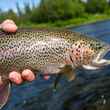

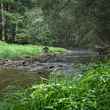




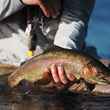



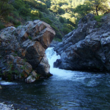
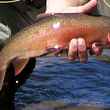














Comments